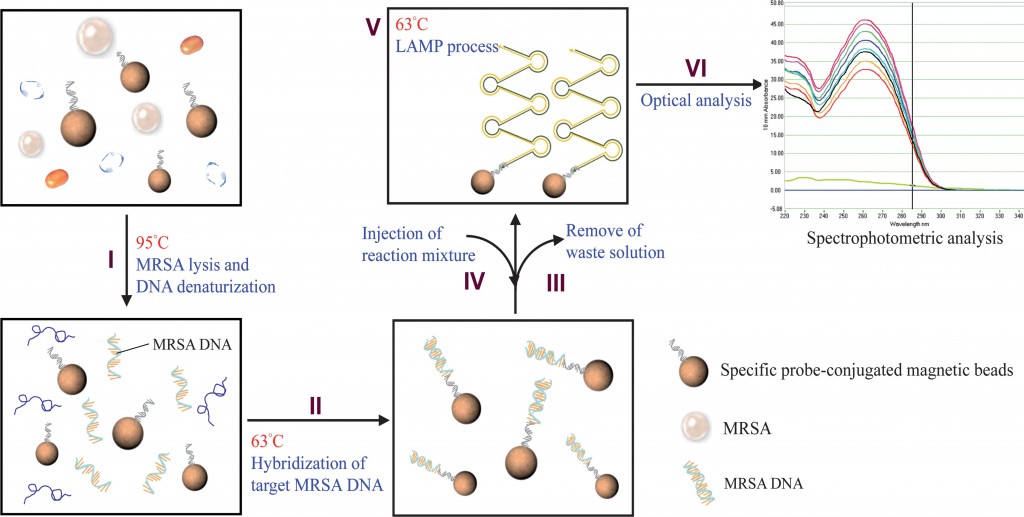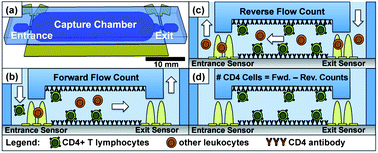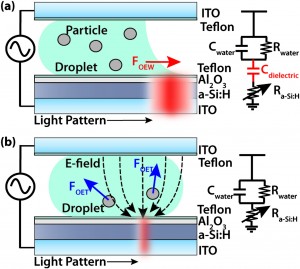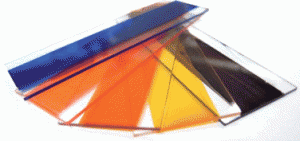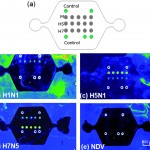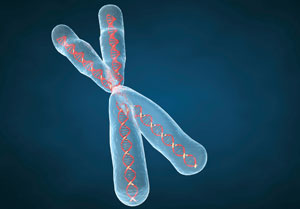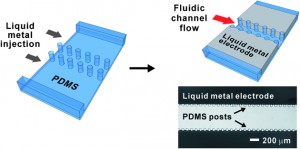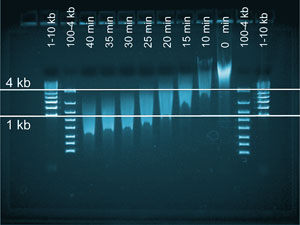In recent years methicillin-resistant Staphylococcus aureus (MRSA) has become one of the most prevalent antibiotic resistant pathogens in hospitals and as such there is an urgent need for a way of rapidly detecting it to limit the spread of the infection.
Current methods of detection, involving the use of PCR, require quite bulky, power-intensive and quite expensive apparatus. Gwo-Bin Lee et al. have developed a portable hand-held system where the entire diagnostic protocol, from bio-sample pre-treatment to optical detection, can be automatically completed within an hour and with a limit of detection 1000- fold higher than conventional bench-top PCR systems.
The entire process can be accomplished automatically via magnetic bead-based hybridization of the target DNA purified from clinical samples, a loop-mediated isothermal amplification process for the amplification of the target genes, and then spectrophotometric analysis of the amplified target genes.
To find out more take a look at this HOT article which is FREE to view for 4 weeks!
A magnetic bead-based assay for the rapid detection of methicillin-resistant Staphylococcus aureus by using a microfluidic system with integrated loop-mediated isothermal amplification
Chih-Hung Wang, Kang-Yi Lien, Jiunn-Jong Wu and Gwo-Bin Lee
Lab Chip, 2011, 11, 1521-1531
DOI: 10.1039/C0LC00430H


